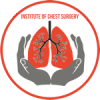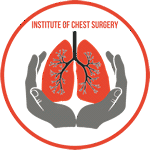What are the Different Stages of Esophageal Cancer?
Esophageal cancer is a formidable disease that affects the esophagus, the hollow tube that carries food and liquids...
+919999461292
MBBS | DNB (General Surgery, Gold Medalist) | DNB (Thoracic Surgery, Gold Medalist)
Thoracic & Lung Transplant Surgeon | Medanta – The Medicity, Gurugram

MBBS | DNB (General Surgery, Gold Medalist) | DNB (Thoracic Surgery, Gold Medalist)
Thoracic & Lung Transplant Surgeon | Medanta – The Medicity, Gurugram


A Diaphragmatic Hernia is a condition where abdominal organs move into the chest cavity due to an abnormal opening in the diaphragm, the muscle that separates the two areas and aids in breathing. Eventration, similarly, is the abnormal elevation of all or part of the diaphragm, which can lead to its dysfunction. These conditions can be congenital (present at birth) or acquired due to trauma or surgical complications. Symptoms might include difficulty breathing, abdominal discomfort, and other gastrointestinal signs due to the displacement of abdominal organs.
Diagnosis is typically made through imaging studies such as X-rays, CT scans, or MRIs, which can reveal the herniation or eventration and the extent of organ displacement. Pulmonary function tests may also be conducted to determine the impact on respiratory capacity. Treatment often involves surgical repair to return the organs to their proper position and reconstruct the diaphragm. The surgical approach can vary from open surgery to minimally invasive techniques such as Video-Assisted Thoracoscopic Surgery (VATS), or Robotic surgery (RATS) depending on the case’s complexity and the patient’s condition. For the surgical treatment of diaphragmatic hernias and eventration, VATS provides a less invasive option with the benefit of reduced recovery times and hospital stays. In addition to VATS, robotic surgery is emerging as a cutting-edge technique offering enhanced precision, flexibility, and control, potentially reducing surgical trauma, and improving patient outcomes.
For individuals diagnosed with a diaphragmatic hernia or eventration, it’s crucial to seek a thoracic surgeon with extensive experience in diaphragmatic surgery. Dr. Mohan Venkatesh Pulle is proficient in these complex procedures, utilizing both traditional and advanced surgical techniques to restore diaphragmatic function and alleviate the symptoms associated with these conditions. His expertise ensures that patients receive the most appropriate and effective treatment for their specific needs, aiming for the best possible outcome and quality of life post-surgery.
See, the diaphragm is like a muscle sheet separating chest from abdomen. In hernia, organs from the belly push up through a hole in the diaphragm. Eventration means diaphragm is weak and bulging upward. Both conditions affect breathing.
In simple words, eventration means the upward shifting of diaphragm towards the chest side as a whole leading to shifting of belly contents into the chest. In this disorder, there will be no rent or hole in the diaphragm, but the whole structure of the diaphragm moves up. Sometimes, the diaphragm – supposed to be a 1 cm thick muscle – converts to a papery thin structure, completely losing its function. The severity of eventration depends on how much up the diaphragm has shifted. It can be mild, moderate and severe. In severe cases, the belly contents can almost completely occupy the chest thus causing complete lung collapse and even pressure on the heart.
Sometimes it’s present from birth, sometimes develops later due to injury or weakness. In some cases, heavy lifting or chronic cough can cause it.
Main things to notice are breathing difficulty, especially after eating, chest pain, heartburn, or feeling full quickly. Some patients also get hiccups frequently.
In hernia – yes, surgery is the only option even it is small.
In eventration – small asymptomatic can be observed. However, large eventration should always be treated even in asymptomatic situations. Needless to say, all symptomatic patients require surgery. We usually do minimally invasive surgery – small cuts only.
Usually 2-3 hours, depending on complexity. We use robotic/VATS technique – very small cuts, camera-guided. In a few cases, even now open surgery is advised.
Most patients stay in hospital 3-4 days. Full recovery takes 4-6 weeks. But you’ll start feeling better much sooner. We’ll guide you through recovery step by step.
Can I eat normally after surgery?
Main things – no heavy lifting for 6-8 weeks, sleep with elevated head, take medicines regularly, do breathing exercises we teach you. Also, quit smoking if you smoke
Desk job – usually 2-3 weeks. Physical work might need 6-8 weeks. We’ll assess your recovery and give fitness certificate accordingly.
“Start with walking after 2 weeks. Gradually increase activity. No gym or heavy exercise for 2-3 months. We’ll guide you about a proper exercise program.”
“Not many restrictions, but better to avoid very large meals. Eat smaller portions, avoid lying down immediately after eating. Stay hydrated, maintain healthy weight.”
“First month weekly, then monthly for 3 months. After that, yearly check-up if everything stable. But if any new symptoms develop, contact immediately.”
Yes, most patients notice significant improvement in breathing after recovery. Lung can expand better when hernia/eventration is repaired. But full improvement might take a few months.
Note: Remember, every patient’s condition is bit different. We’ll make specific plan for your case. My team and I are always here to help if you have any concerns during treatment or recovery.
Esophageal cancer is a formidable disease that affects the esophagus, the hollow tube that carries food and liquids...
Esophageal cancer is a formidable and often challenging disease that affects the esophagus, the muscular tube that carries...
Esophageal cancer is a challenging and potentially life-threatening condition that requires timely diagnosis and appropriate treatment. When esophageal...
Esophageal cancer is a serious and potentially life-threatening disease that affects the esophagus, the muscular tube that carries...
Esophageal cancer is a formidable adversary that can silently develop within the esophagus, the muscular tube connecting the...
Esophageal cancer is a serious and potentially life-threatening condition that affects the esophagus, the muscular tube responsible for...
MBBS | DNB (General Surgery, Gold Medalist) DNB (Thoracic Surgery, Gold Medalist)
Thoracic & Lung Transplant Surgeon
Medanta – The Medicity, Gurugram
An esteemed thoracic surgeon, excels in minimally invasive procedures (VATS & Robotic surgery) for both benign and malignant lung conditions. With a stellar academic background and international training, he is dedicated to offering compassionate and expert patient care.

Website designed and Developed with ❤️ by GigaWebZone
Copyright © 2023 All rights reserved.
WhatsApp us